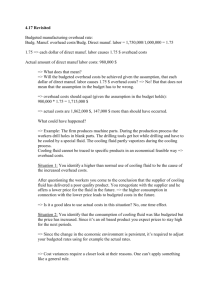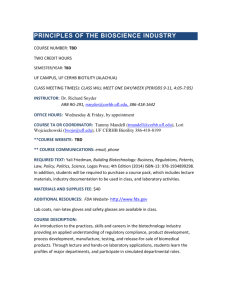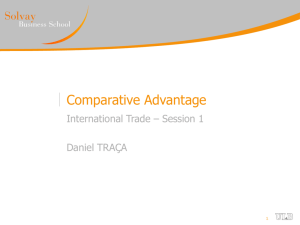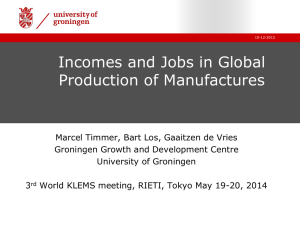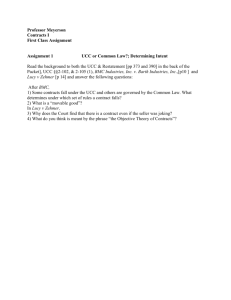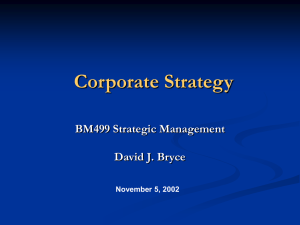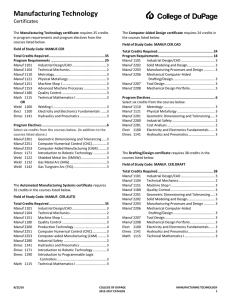Carter's redux Products Liability Outline
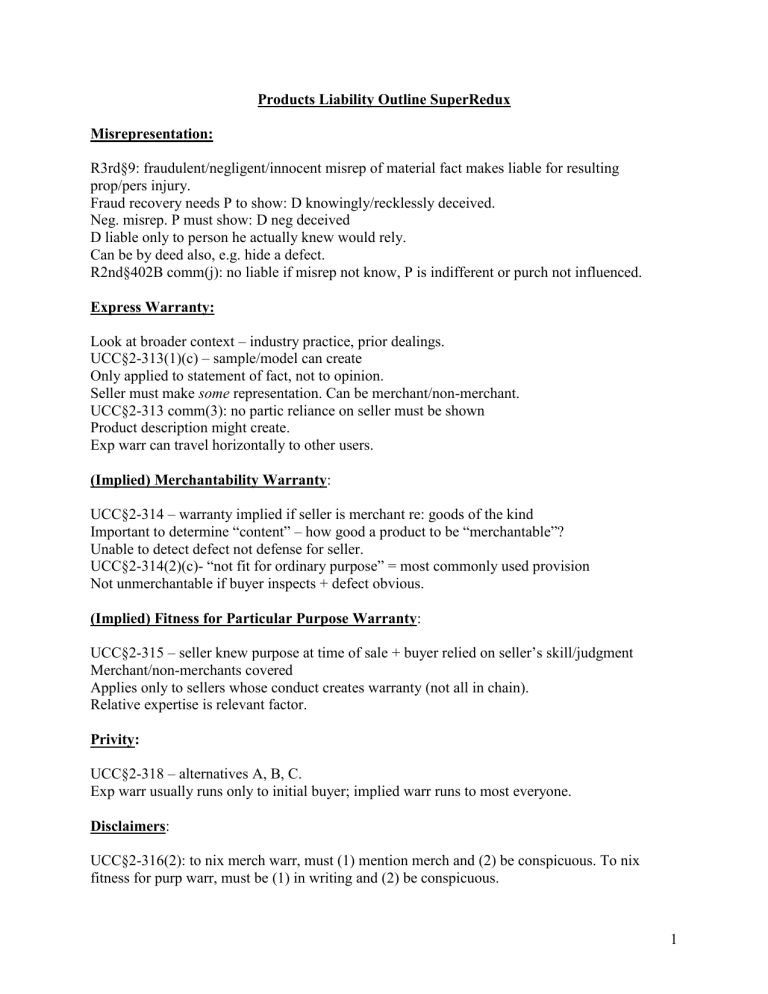
Products Liability Outline SuperRedux
Misrepresentation:
R3rd§9: fraudulent/negligent/innocent misrep of material fact makes liable for resulting prop/pers injury.
Fraud recovery needs P to show: D knowingly/recklessly deceived.
Neg. misrep. P must show: D neg deceived
D liable only to person he actually knew would rely.
Can be by deed also, e.g. hide a defect.
R2nd§402B comm(j): no liable if misrep not know, P is indifferent or purch not influenced.
Express Warranty:
Look at broader context – industry practice, prior dealings.
UCC§2-313(1)(c) – sample/model can create
Only applied to statement of fact, not to opinion.
Seller must make some representation. Can be merchant/non-merchant.
UCC§2-313 comm(3): no partic reliance on seller must be shown
Product description might create.
Exp warr can travel horizontally to other users.
(Implied) Merchantability Warranty :
UCC§2-314 – warranty implied if seller is merchant re: goods of the kind
Important to determine “content” – how good a product to be “merchantable”?
Unable to detect defect not defense for seller.
UCC§2-314(2)(c)- “not fit for ordinary purpose” = most commonly used provision
Not unmerchantable if buyer inspects + defect obvious.
(Implied) Fitness for Particular Purpose Warranty :
UCC§2-315 – seller knew purpose at time of sale + buyer relied on seller’s skill/judgment
Merchant/non-merchants covered
Applies only to sellers whose conduct creates warranty (not all in chain).
Relative expertise is relevant factor.
Privity:
UCC§2-318 – alternatives A, B, C.
Exp warr usually runs only to initial buyer; implied warr runs to most everyone.
Disclaimers :
UCC§2-316(2): to nix merch warr, must (1) mention merch and (2) be conspicuous. To nix fitness for purp warr, must be (1) in writing and (2) be conspicuous.
1
UCC§2-316(b): buyer’s chance to inspect negates imp warr as to defects if inspection would have revealed.
Remedy Limitations :
UCC§2-719(c) – limiting conseq dmgs for pers injury prima facie unconscionable. Limiting dmgs from commercial loss is not.
STRICT TORT LIABILITY:
Policy:
Manufs will spend up to point of accident costs
SL encourages manuf to do less of behavior b/c liable for everything; neg may encourage manufs to do X more safely.
SL formed when accident were more unilateral – no longer true.
DEFECT:
Manufacturing defect:
R3rd§2(a) – departs from intended design even though all reas care taken
R3rd§7 – consum expectation test for food contaminants (only)
Design Defect 1 – Consumer Expectations :
Characterization – varies by court; P must perceive general danger or specific risk encountered?
Lousy test when applied to kids.
Also lousy for complex/industrial products.
Lawyers should review ads (Jeep CJ7) – never say “safe” to consumers.
Design Defect 2 – Risk-Utility Analysis:
U.S.A.M.U.U.F.
R3§2(b) – foreseeable risks of harm/reduced avoided/adopt reas alt design omission of which renders not reas safe
R3rd – jury can’t weigh econ benefits e.g. manuf creates lots o’ jobs
“Topical accounting” – save $5 on batteries exercise
TX applies risk-util test regardless of product complexity.
Uniroyal tire bead case – TX adopts R3rd§2(b)
P must show both that reas alt design could avoid risk and product not reas safe b/c design omitted.
Remedial measures not admissible to show defect.
Foresight applies – what manuf knew at time of manuf.
(a) Ignorance of risk caused by misuse:
2
Remember prod liab is defect liab not strict liab: P still must show a defect.
Case: fat guy fell onto glass skylight.
(b) Changes in technology
Scientific knowledge must be avail at time of manuf (e.g. motorboat kill switch)
Must P build prototype? Developing area of prod liab. Ladder loops case.
D manuf would love jury instruct that safer alt design is req’d element of P’s case – technology not avail looks better than cheapskate manuf.
V. unlikely P can win w/out showing any safer design except maybe v. dangerous kids toys.
(c) Non-delegability of the design process:
Delegability (e.g. P choosing safety options) is a real morass; court less likely to allow manuf to deleg w/ industrial machinery.
Is unit injuring P a component? Look at: (1) trade custom…when is it usually installed
(2) relative expertise (3) when is installation most practical?
Human Factors Engineer – great witness/talks about how people actually react
R2nd: Substantial change: component manuf off hook if b/c of incorp into final prod the component has subst. changed
R3rd: substantial participation: componen manuf particip liable if partic in design process
(d) Drugs/medical devices:
Drug may be “unavoidably unsafe” (but manuf/warning defect case still viable)
§402A comm.(k) – util outweighs risk, unavoidably dangerous
FDA approval – probative not dispositive
Learned intermediary doctrine interplays.
R3rd§6(c): only drugs not protected = those reas healthcare prod wouldn’t prescribe.
Non Rx drug manufs – sue anytime
WARNING DEFECTS :
(1) Duty to Warn:
P must show (1) manuf had actual/construct knowledge of danger (2) no reason to believe consumer would know of danger (3) failed to exercise reas care to inform consumer.
Fail to warn creates imp warr merch claim b/c no warning = not fit for ord purp.
No liab for unknown risks at time of manuf.
Unforeseeable misuses need not be warned of.
(2) Adequacy of Warning:
Does it: (i) get attention? (ii) apprise of gravity of danger? (iii) instruct how to use properly? (iv) give consequence of ignoring warning?
Symbols might work e.g. respirator picture for illiterate P in weedkiller poisoning case.
Adequacy of warning is fact question for jury.
Don’t want overpopulation of warnings (black and decker drill case): aesthetics and diluting effect.
Anchoring: Volvo says their cars are safe ergo I won’t wear my belt.
3
(3) Obvious or known dangers
No duty if danger is obvious (sharp knives cut).
Duty to warn based on reasonable person standard.
Does P fully appreciate danger? If so will prob lose on causation: if known but consciously disregarded, warning would be futile.
Majority of jurisdictions have judge decide if danger is obvious beforehand; if so, no duty.
Multi-use products more likely to catch break from courts, e.g. Cat without ROPS.
Court will focus on objective awareness of community, not P’s subjective awareness of risk.
TX view of open/obvious is pretty expansive.
(4) Learned Intermediaries / Sophisticated Users
Bulk supplier of product for use in manufacturing process
probably no duty to warn sophisticated industrial user’s EEs…can assume bulk purchaser will keep own EE’s safe.
Even for drugs directed marketed to consumers, no duty to inform anyone other than learned intermediary doctor. May differ for vaccination clinics, but cases rare. Pharmacists exempt from duty – still the doctor’s job.
(5) Allergies / Idiosyncratic reactions
Duty to warn depends on if reas foreseeable to manuf that “substantial number” of pop will suffer an injury of consequence due to allergy. If you warrant product is “safe” though, tough luck, can’t hide behind odd plaintiff reaction.
(6) Continuing duty to warn
If consumer disregards post sale recall offer, goes more to comparative neg than total defense.
If product is safe when manuf but advancing tech renders it unsafe, R3rd§10
if reas seller would have made post sale warning but the manuf didn’t, liable for injuries due to defect.
Big factor: if manuf ever regained substantial control, e.g. football helmet refurbishment.
CAUSATION IN FACT
Almost always but for causation, except for mult causes.
If Plaintiff knew of danger, hence warning makes no diff, court will find for D on lack of causation. If P didn’t read warning, can’t later go to court and argue a better one would have saved them.
If there’s no warning, most courts recog presumption that if there was, P would have read it, followed it, avoided injury.
Enhancement of injuries:
Majority approach w/ indivisible damages is that defendant will be liable for all injuries, not just those enhanced by defect (R3rd§16).
P must show that the defect was a substantial factor in causing enhanced injuries; can do so by showing how badly they were hurt.
Regardless of divisibility, jury must still decide comparative fault – tricky when injury not divisible b/c D might get 100% of blame.
4
R3rd§26 – just should try to separate out enhanced injuries. If they can’t, assign damages based on how jury figures comparative fault.
Linking D to the Product:
Alternative liability – two shooters fire at same time…leaves D’s to prove they didn’t do it.
Market share liability – removes causal element from P’s case; largely moot now, all DES P’s are gone.
PROOF OF DEFECT & CAUSATION
Industry standard and custom: non-gov’t promulgated codes should be allowed in b/c info of the type experts commonly rely on.
Post accident remedial measures: if you introduce reas. alt. design same as manuf’s remedial measures and they challenge reasonableness, you can get in their remedial measures to show defect.
Expert wits: Daubert factors: (i) subject to peer review/publication (ii) known/potential rate of error (iii) can it be/has it been tested (iv) general acceptance in sci. community.
Relevance inquiry = is the evidence applicable beyond facts at bar?
TX Robinson added (i) extent testimony relies on subjective interpretation (ii) if testimony/theory subjected to non-judicial use.
Scientific evidence: relative risk number – indicates how many time more likely exposure makes you to get disease x or y.
General causation = it hurts everyone. Specific causation = and it hurt me too.
Test power
easiest way to increase is to up the sample size.
Internal validity: is this r’ship occurring due to causation or for some other reason. Seeks to control extraneous variables that might be causing patterns.
External validity: does the same r’ship occur beyond the doors of the lab? E.g. true of animals, but is it true of humans too?
Relative risk number of 2 or higher = preponderance of the evidence. Good enough for specific causation perhaps.
Kumho – court may apply Daubert factors to technical or other evidence.
Be ready to argue issue in court re: how far P’s expert must go in developing prototype. High cost may excuse the need.
Differential diagnosis commonly used by medical doctors, but “must rule in before you can rule out.” Temporal evidence (challenge/de-challenge) is persuasive, but not enough by itself.
PROXIMATE CAUSE
Three limits: (1) type of harm (2) manner of harm foreseeable (3) class of persons/foreseeable victim. Texas uses “producing cause” – lack of foreseeability alone won’t deny P recovery.
Product alteration: good argument is that product only became not reasonably safe due to buyer’s modification of it. Majority will hold manufacturer liable if alteration was foreseeable but never warned about.
Statutes and regulations:
TX 82.008 = manuf. not liable if complied with statute governing gov’t standard for that product.
But rebuttable by showing (i) standards themselves too low (ii) manuf misrepresented data to gov’t.
5
TX 82.007 speaks to medicines; if warning complies w/ gov’t requirements, it’s not defective, rebuttable by showing (i) misrepresented data (ii) sold after FDA recall (iii) sold for off label use. Note – can’t rebut by challenging adequacy of standards.
Regulation:
Gov’t can’t dictate design, but they can issue performance standards; better b/c then manuf’s can use advancing technology to achieve safety goals. But where’s the line? When does gov’t force too much price increase on manuf’s via safety perf standards?
Preemption:
Very statute specific area, hard to find generally applicable principles. Supremacy clause: federal law will trump state law speaking to the same issue.
Express federal preemption forecloses any implied preemption arguments; courts will probably work within 4 corners of express preemption only.
Don’t read too much into federal agency silence on an issue – don’t rush to see failure to regulate in itself as an affirmative regulation.
DAMAGES
Economic loss:
Pure economic loss rule: only remedy is in contract, no tort remedy if nobody is hurt. Protective of manufacturers b/c adds predictability, if they don’t hurt anyone, their damages are limited to economic loss.
Texas and the majority of states won’t let a plaintiff play the “is this a component product?” game to escape the economic loss rule. Texas takes a “divide and conquer” approach to collateral damage caused by product: contract remedy for damage to product itself, tort remedy for the stuff all around it that the product wrecked.
Mental Distress:
Bystander recovery for emotional distress requires contemporaneous observance of injury to close relative.
Texas does not recognize a claim for negligent infliction of emotional distress unless you have a pendent claim for another tort (e.g. privacy).
Majority of jurisdictions won’t allow recovery for fear alone, e.g. breathing in asbestos and worrying about future health.
Punitive Damages
Punitives tend to “feel more acceptable” (a) the closer you get to defendant showing negligence and (b) in the design or warning claims, rather than manufacturing.
Juries have a bad reaction to risk-benefit analyses; they don’t like being told it would have cost
$100mill to save $20mill worth of human lives.
Big issue: is it fair to hold manufacturers liable who make products that inevitably at some time will injure someone, e.g. cars?
6
